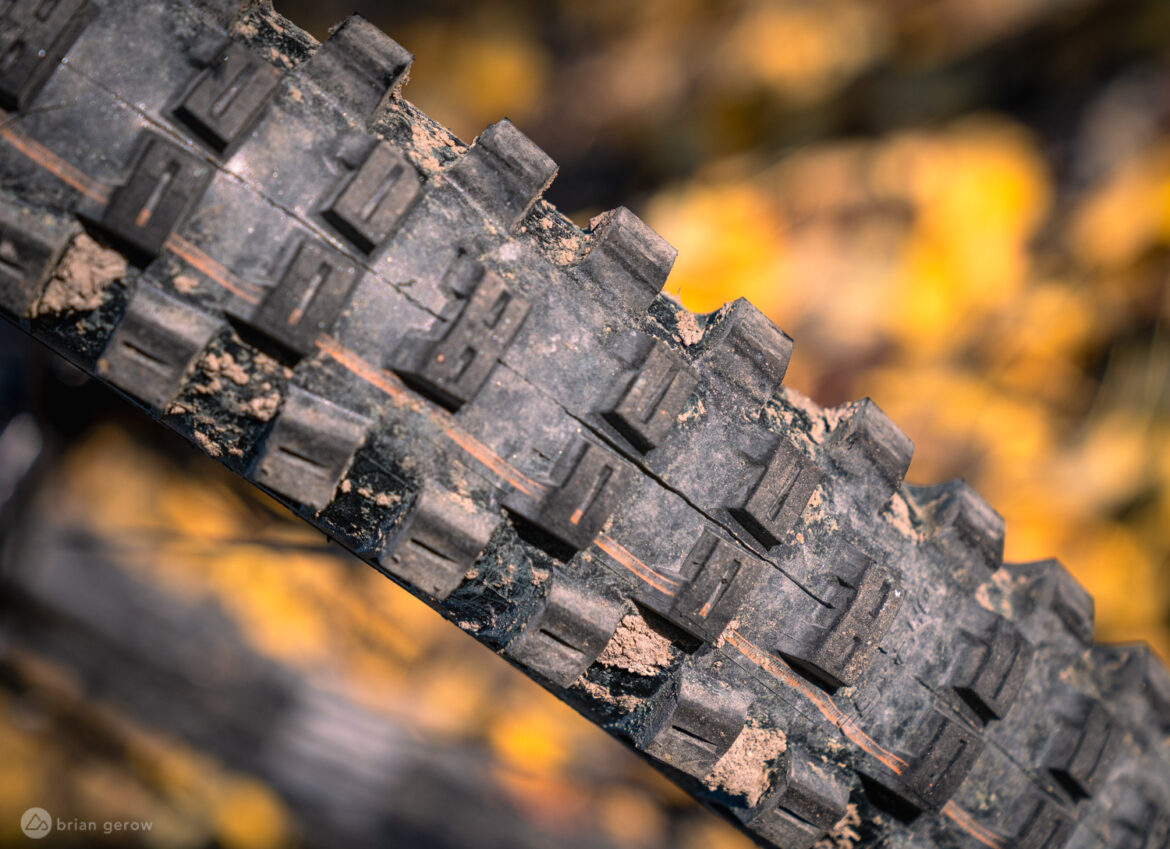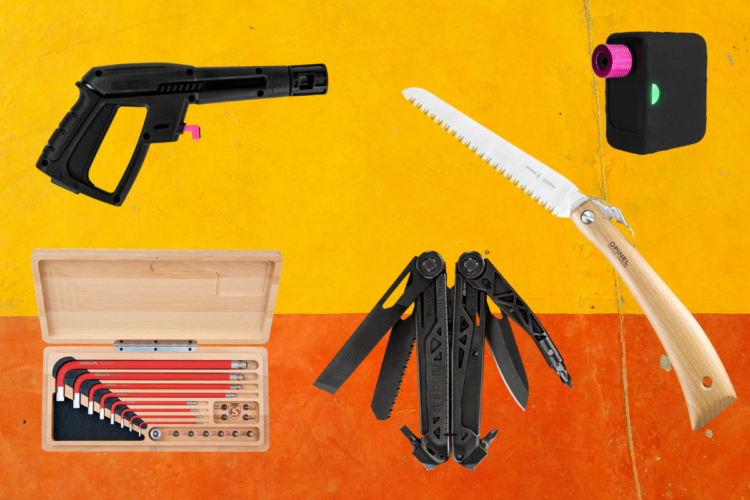
The recently-released Schwalbe Big Betty rear mountain bike tire is available in 2.4″ or 2.6″ widths in all three diameters, with a Super Trail, Super Gravity, or Super DH casing, and with the Addix Soft or Addix Ultra Soft tread compound. There are also sidewall color options for a few models, and a heavier wire-bead version for folks who need it.
I tested the Schwalbe Big Betty 29×2.4″ size with a Super Gravity casing and Addix Soft tread compound that retails for ~$90. While I love the Ultra Soft tread up front, the longer-lasting Addix Soft rubber is plenty gummy at the rudder end. I tested the Schwalbe Big Betty tire behind a fresh Schwalbe Magic Mary at the helm, with the same casing and grip specifications, per recommendations from Schwalbe.
What makes a rear tire so tail-specific?
The simple answer is braking traction.
The Schwalbe Big Betty tire is a rear-specific tread pattern from shoulder to shoulder, and the bold central braking blocks outline its intentions. The middle rows consist of two large split chunks of tread that are shaped like mini gold bars, followed by a single bar that’s a little wider than the one of the paired knobs preceding it.
The gaps between every set of central lugs are quite large, giving them ample soil bite for heavy braking or climbing traction. Those same spaces also clear well in muddy conditions, making the Schwalbe Big Betty an excellent all-season gravity tread.


The pairs and single blocks of central tread alternate with the shoulder lugs to create a smooth transition in the corners, allowing the tire to hook up and scrub speed when the bike is at maximum lean. The alternating tread pattern also makes for a predictable breakaway point.
There are no surprises around traction with the Schwalbe Big Betty, and instead it’s a great tread to mount up when you’re riding trails that you may not know well, where predictability is paramount.


Well-supported rows of shoulder knobs on either side are buttressed by two sturdy pillars that allow them to bite into the earth instead of squirming or skating over it. No matter how hard I push this tire into flat turns it manages to find grip fast and maintain it.
While it’s not as square as some rear-specific tires, the Schwalbe Big Betty will likely work well as a front tire for the messiest and most off-camber race tracks. I haven’t tried it up front yet, as I can’t bring myself to remove the Schwalbe Magic Mary.
The flipside of all that predictable braking and cornering grip is that the Schwalbe Big Betty tire will take some extra carbs to climb with. Like any good gravity tire, this thing is heavy and the soft lugs grip the ground like kitty claws on a tree trunk.
Most riders who charge at full tilt into the kind of descents that this tire is designed for are prepared to lug it back to the top, but it’s worth mentioning that the Big Betty pulls a little more drag than the Magic Mary I had mounted out back previously.

Schwalbe Big Betty Super Gravity Tire Casing
The Schwalbe Super Gravity casing sits second in line for the brand’s descent-designed puncture protection, and it performs admirably as ever. I haven’t punctured one of these sturdy casings yet, despite hearing a few rim strikes on every descent. I did not mount any sort of insert between the casing and the Crankbrothers Synthesis 30mm alloy rim it’s sealed to. It seems Schwalbe has made a tough enough tire to forego the extra foam.
For most tire testing, I have been pumping a consistent 20 PSI front and rear, and the Super Gravity casing feels well supported and supportive in harsh compressions and tight berms with the low pressure. Despite the aforementioned rim strikes, this pressure provides the ideal balance of grip, rebound, and support for my weight, and with zero dents in the rims there’s no need to change it. If I take this tire and wheel combo someplace far rockier like Sanremo I’ll definitely add 2-5 PSI just to be safe, but for the lunch-lap tracks it’s perfect.
Tubeless setup with the Super Gravity casing was a snap, and the Schwalbe Big Betty tires maintain air pressure well throughout the week. With a proper tape job, ample sealant, and a good valve, thick casings maintain pressure impressively these days.

Schwalbe Big Betty vs Maxxis DHR II Tire
A chorus of internet chatting followed the Big Betty release in August, as folks were surprised by its resemblance to the Maxxis DHR II.
While there are a number of significant differences between the two they both have the same job to do, and require similar tools to do it. They both need large central braking bars, a clear transition path to the shoulder knobs, and loads of sea between those little rubber islands to allow for mud clearance and soil grip.
The Schwalbe Big Betty has a slightly rounder profile, and the braking bars are a little less ramped than those on the Maxxis DHR II. The shoulder lugs on the Big Betty are angled outward to act like tiny catch-berms in the turns, whereas the Maxxis DHR II shoulders are cut in an L-shape to achieve similar results.
On the trail, the Schwalbe Big Betty seems to have a touch more braking and climbing traction, where the Maxxis DHR II pulls ahead on off-camber tracks with its quadratic profile. Both of these mountain bike tires grip the earth exceptionally well, making an excellent rudder for their steering partners or steering the ship if the captain prefers.
Schwalbe Big Betty Tire Review Conclusion
Gravity riders who enjoy testing the limits of their traction will find a formidable match in the Schwalbe Big Betty tire. This enduro and downhill tire has all of the grip and puncture protection we need in a rear tire, with a supportive carcass to push against all day.
- Price: $70-90USD
- Available at Jenson USA and other retailers




















0 Comments